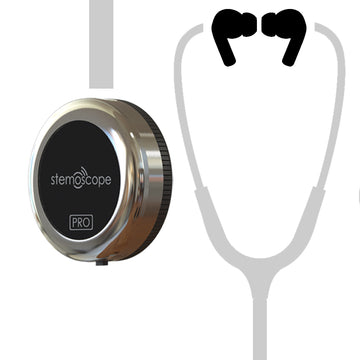The Future of Auscultation: Bluetooth Stethoscopes Explained

In the ever-evolving landscape of healthcare technology, the stethoscope—a symbol of medical expertise for over two centuries—has also undergone a transformation. The introduction of Bluetooth technology into the realm of auscultation has paved the way for a new era in healthcare. In this blog post, we will delve into the world of Bluetooth stethoscopes, explaining what they are, their benefits, and how they are changing the way healthcare professionals listen to heart and lung sounds.
The Birth of Bluetooth Stethoscopes
Traditional stethoscopes, with their familiar Y-shaped tubing and chest piece, have been the go-to tool for doctors, nurses, and other medical professionals for generations. However, as technology continues to advance, so does the need for more efficient and versatile medical equipment. This is where Bluetooth stethoscopes come into play.
Bluetooth stethoscopes are modern marvels that incorporate wireless technology into the classic stethoscope design. Instead of relying on traditional earpieces and chest pieces, these devices connect to earphones or smartphones via Bluetooth, depending on the Bluetooth stethoscope models. For example, Stemoscope PRO has the capability to connect to both Bluetooth earphones and smartphones but Stemoscope II can only connect to smartphones. This allows for the transmission of heart and lung sounds to electronic devices, opening up a world of possibilities in healthcare.
The Benefits of Bluetooth Stethoscopes
Bluetooth stethoscopes often offer superior sound quality compared to their traditional counterparts. The digital transmission of sound ensures that even faint or subtle sounds can be heard clearly, improving diagnostic accuracy.
Perhaps one of the most significant advantages of Bluetooth stethoscopes is their ability to enable remote monitoring. With the sound data transmitted wirelessly to a device, healthcare professionals can conduct auscultations from a distance. This is especially valuable in telemedicine scenarios and for monitoring patients in isolation.
Bluetooth stethoscopes often come equipped with the ability to record and share audio files. This feature is invaluable for educational purposes, consultations, and second opinions. Medical students can benefit from recordings of clinical cases, and doctors can easily collaborate on complex diagnoses.
Bluetooth stethoscopes are typically lightweight and easy to carry, making them convenient for healthcare professionals who are always on the move. They can connect to various devices, including smartphones and tablets, which are commonly used in clinical settings.
Changing the Way We Practice Medicine
The integration of Bluetooth technology into stethoscopes represents a significant shift in the practice of medicine. Healthcare professionals now have access to tools that enhance their diagnostic capabilities, improve patient care, and expand the horizons of telemedicine. These devices bridge the gap between traditional auscultation and modern technology, offering a glimpse into the future of healthcare.
As we continue to witness the evolution of Bluetooth stethoscopes and their adoption in clinical settings, it becomes evident that they are here to stay. With their ability to deliver superior sound quality, facilitate remote monitoring, and enable real-time analysis, Bluetooth stethoscopes are poised to revolutionize how we listen to and interpret vital bodily sounds. They are not just tools; they are gateways to a more connected and efficient healthcare system.
In conclusion, Bluetooth stethoscopes are more than just the latest gadgets in healthcare; they are instruments of progress and improved patient care. With their ability to bring the age-old practice of auscultation into the digital age, they represent the future of medical diagnostics. As technology continues to advance, so too will the capabilities of Bluetooth stethoscopes, promising a brighter and healthier future for all.











